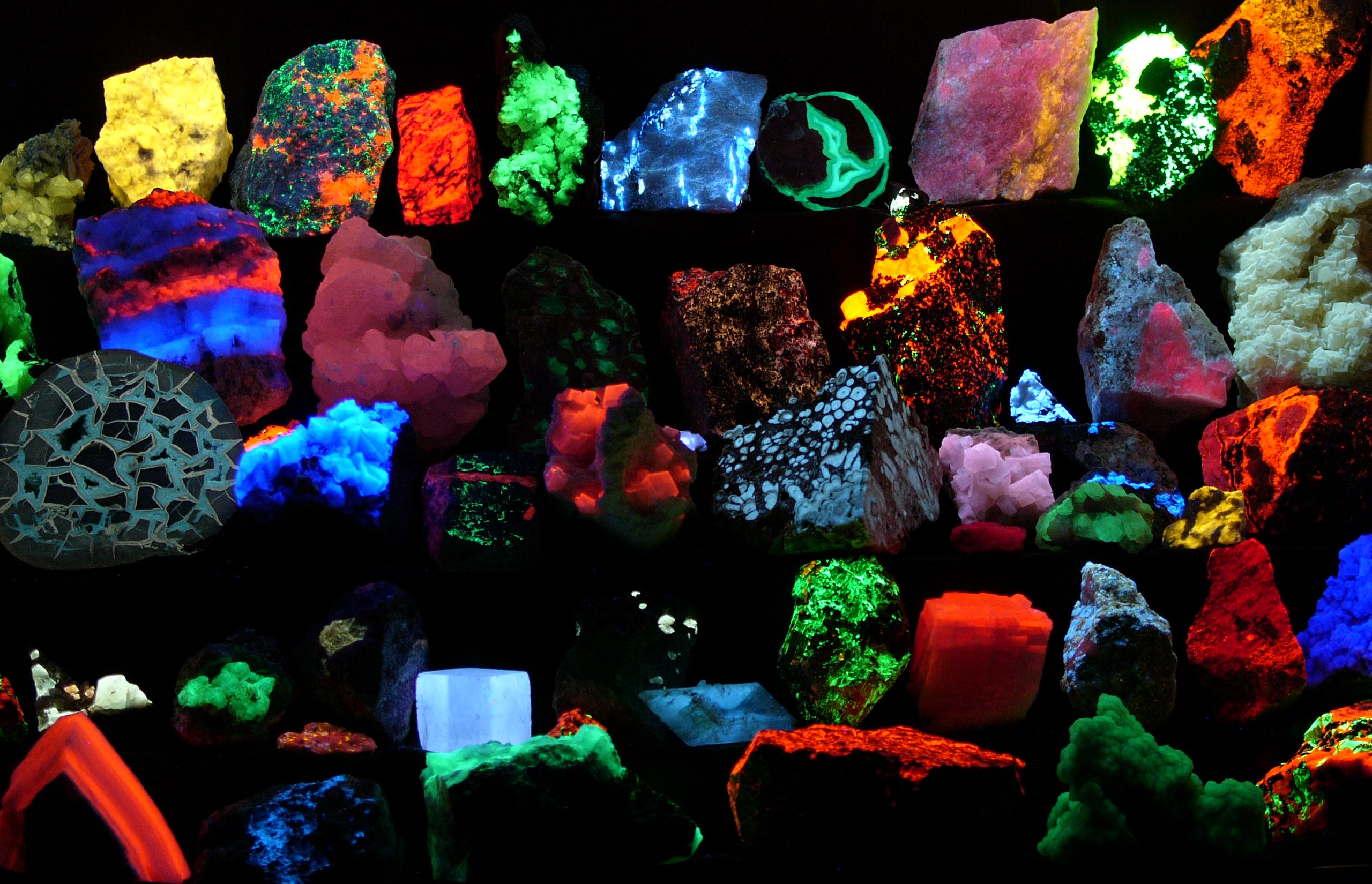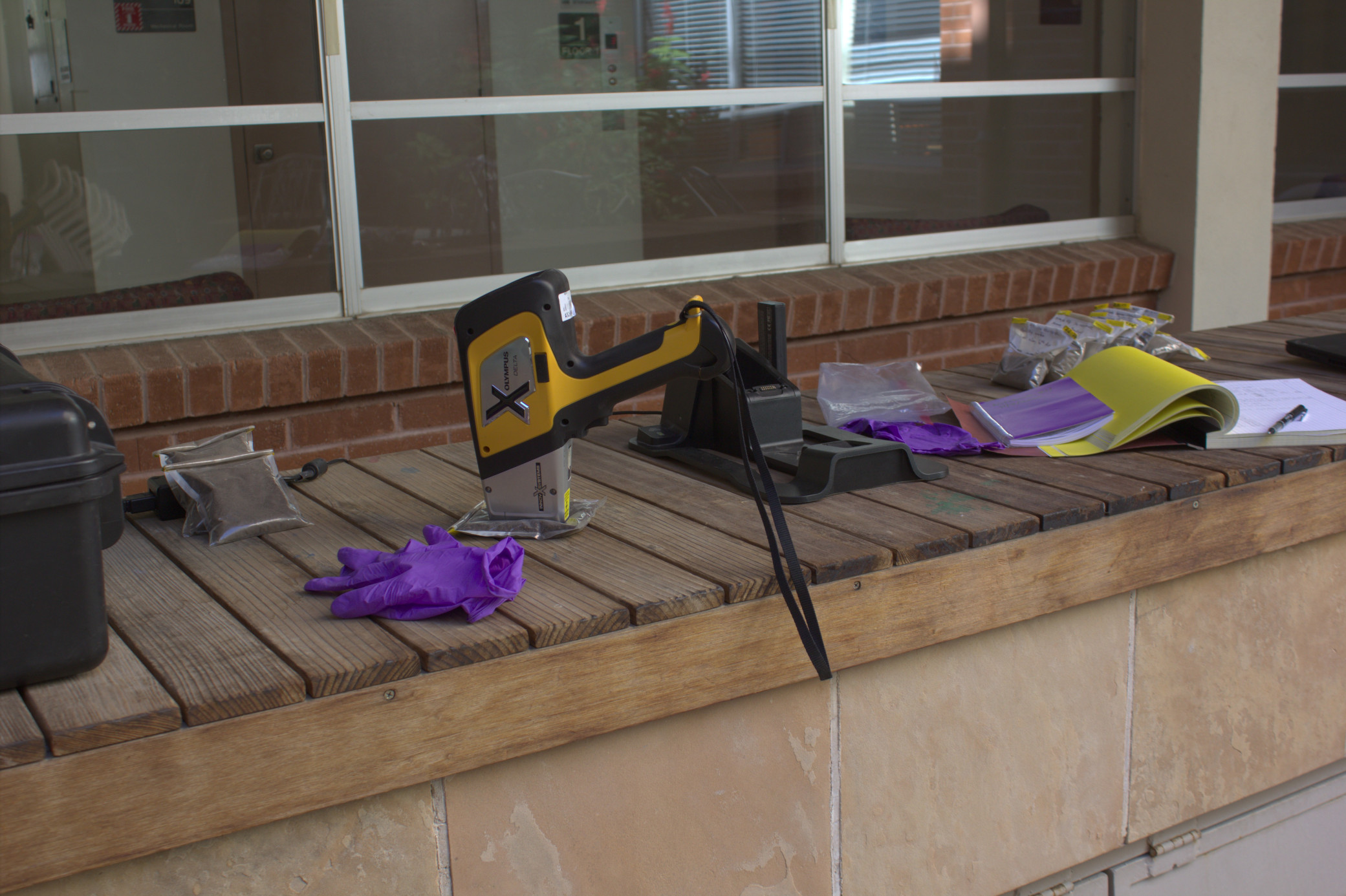Dan Using Portable XRF to Measure Lead, Arsenic, and Copper in Soils
Dan used a portable x-ray fluorescence (XRF) analyzer to measure lead, arsenic, and copper in the soil samples from public spaces in and around Troy, NY, as well as soil samples archived in the Ramírez-Andreotta laboratory. The results will be compared to another laboratory technique, inductively coupled plasma mass spectrometry (ICP-MS), as well as the field tests for lead, arsenic, and copper in the Community Soil Study Toolkit. The XRF analyzer is portable and can be brought into the field, but it is a costly piece of equipment. It is able to measure the concentrations of elements like lead, arsenic, and copper in soil through the property of fluorescence.
Fluorescence occurs when an object or material absorbs light and then subsequently re-emits light. A vibrant example is when an object absorbs ultraviolet light (which our eyes cannot see) and re-emits visible light, such as in the image below of various fluorescent minerals taken by Hannes Grobe and shared under a Creative Commons license:

Similarly, materials can exhibit x-ray fluorescence by absorbing and re-emitting x-rays, although we cannot see this with our eyes. The XRF analyzer produces x-rays that are absorbed by a material and then measures the re-emitted x-rays. The individual atoms in a material are what absorb and re-emit the x-rays, and different chemical elements re-emit x-rays with different energy signatures. So by measuring the energies of the re-emitted x-rays, the concentrations of elements like lead, arsenic, and copper in a material can be determined. In the image below, the XRF analyzer is measuring the elemental concentrations of a soil sample through a plastic bag.
